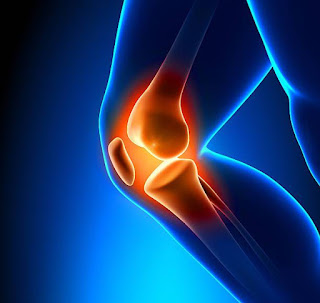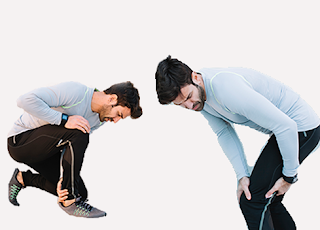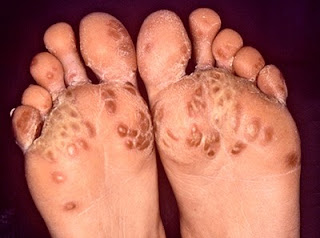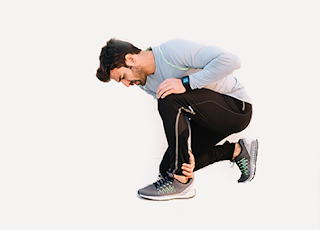Ayurvedic Treatment For Medial Meniscal Tear In Nagpur India
About Meniscal Tear:–
A meniscus tear is a common knee. Each knee has two menisci (plural
of meniscus)- one at the outer edge of the knee and one at the inner
edge. Meniscus Tear Treatment Ayurveda Nagpur India, The menisci keep
your knee steady by balancing your weight across the knee. A torn
meniscus can prevent your knee from working right.
SYMPTOMS AND SIGNS:
The patient’s chief complaints are usually knee pain and swelling. These get worse when the knee bears more weight(for example, when running).
Another typical complaint is joint locking. When the patient is unable
to straighten the leg fully. This can be accompanied by a clicking
feeling. Sometimes, a meniscal tear also causes a sensation and that the
knee gives way.
A tear of the meniscus commonly follows a trauma which involves rotation
of the knee while it was slightly bent. These maneuvers also excite the
pain after the injury; for example, getting out of a car is often
reported as painful.
The cooper’s sign is present in over 92% of tears. It is a subjective
symptom of pain in the affected knee when turning over in bed at night.
Osteoarthritis pain is present with weight bearing, but the meniscal
tear causes pain with a twisting motion of the knee as the meniscal
fragment gets pinched, and the capsular attachment gets stretched
causing the complaint of pain.
Ayurvedic Treatment For Medial Meniscal Tear In Nagpur
- Vatapitta haram
- Sula sopha haram
DHANVANTARAM KASAYAM:60 ml morning and night before food(indicated for ama pacana in dhatu,asthi visesatvam)
Dhanwantharam kashayam benefits:
Used in Ayurvedic postnatal care of mother and in gynecological diseases.
It is also effective against Vata diseases, low back ache
3. It is a good uterine tonic.
4.Useful in arthritis conditions like pain, numbness in hands and feet, swelling.
5.Effective in cases like fever, indigestion, hydrocele, gulma, strained micturition, vaginal ailments, and consumption.
6.A palliative in paraplegia, facial paralysis, bahyayama, antarayama, waitsing and numbness and excellent in nervous disorders.
Dhanwantharam kashayam dosage:
1.5 – 10 ml, before food, or on empty stomach, once or twice a day or as directed by an Ayurvedic doctor.
2. If the kashayam is concentrated, then it needs to be mixed with equal quantity of water and should be taken.
3.AVN manufactures this in Kashayam tablet form.
4. The dose of Dhanwantharam kashayam tablets is 2 tablets 2 times a day before food or as directed by an Ayurvedic doctor.
Pathya:
Light food is to be taken. Avoid body movements especially hard work and
journeys. Bathe every 3rd or 4th day in water boiled with Haritaki
(Terminalia chebula), Bala (Sida rombifolia) or pepper leaves, Better
use Dhanwantaram tailam for the head and Kuzhampu for the body. Mutton
soup may be taken according to digestion.
Dhanwantharam kashayam ingredients:
The kashayam is prepared by following herbs in equal parts.
Bala moola – Root of Sida rotusa
Yava – Barley – Hordeum vulgare
Kulattha – Horse gram – Dolichos biflorus
Dashamoola – group of ten roots –
Bilva – Aegle marmelos
Agnimantha – Premna mucronata
Shyonaka – Oroxylum indicum
Gambhari – Gmelina arborea
Patala – Stereospermum suaveolens
Shalaparni – Desmodium gangeticum
Prinshnaparni – Urarica picta
Gokshura – Tribulus terrestris
Brihati – Solanum indicum
Kantakari – Solanum xanthocarpum
Meda – Polygonatum cirrhifolium
Mahameda – Polygonatum verticillatum
Daru – Cedrus deodara
Manjishta – Rubia cordifolia
Kakoli – Fritillaria roylei
Ksheerakakoli – Lilium polyphyllum
Chandana – Pterocarpus santalinus
Sariva – Hemidsemus indicus
Kushta – Saussurea lappa
Tagara – Valeriana wallichi
Jeevaka – Malaxis acuminata
Rishabhaka – Manilkara hexandra
Saindhava – Rock salt
Kalanusari – Ichnocarpus frutescens
Shaileya – Convolvulus pluricaulis
Vacha – Acorus calamus
Agaru – Aquilaria agallocha
Punarnava – Boerhaavia diffusa
Ashwagandha – Withania somnifera
Shatavari – Asparagus racemosus
Ksheerashukla – Anogeissus latifolia (?)
Yashti – Licorice – Glycyrrhiza glabra
Vara = Triphala – Terminalia chebula, Terminalia bellirica, Amla (Emblica officinalis)
Shatahva – Saccharum munja / Peucedanum graveolens
Mashaparni – Teramnus labialis
Mudgaparni – Phaseolus trilobus / Vigna libosa
Ela – Cardamom – Elettaria cardamomum
Twak – Cinnamomum zeylanicum
Patra – Cinnamomum tamala
LAKSA GUGGULU:1 tablet 3 times a day after food(asthi visesatvam,santhna karam)
Lakshadi Guggulu benefits:
1. It is widely used in the Ayurvedic treatment of osteoporosis
2.It is also known to fasten the healing process in bone fracture.
Effect on Tridosha – Calms Vata
Lakshadi Guggul dosage:
1 – 2 tablets 2 – 3 times a day, before or after food or as directed by an Ayurvedic doctor.
Lakshadi Guggul Ingredients:
Laksha – Laccifer lacca
Asthisamhrut – Cissus quadrangularis
kakubha – Terminalia arjuna
Ashwagandha – Withania somnifera
Nagabala – Grewia populifolia
Guggulu – Purified Commiphora mukul.
All the above ingredients are pounded with guggulu and rolled into pills of uniform size of 500 mg.
Lakshadi Guggul reference:
Bhaishajya Ratnavali Amavatarogadhikara 90 – 95
NAGARADI LEPA CHOORANAM:
Indication: Effective in traumatic inflammatory swelling, bone, ligament and tendon injury.
Method of usage: Sufficient quantity of powder mixed with tender coconut
shell juice or hot water, make a paste and applied over the affected
part.
Ingredients:
No. Malayalam name quentity
1 Manikkunthirikka 1 Part
2 Vacha 1 part
3 Chukku(Nagara) 1 Part
4 Meera 1 part
5 Arakkodu 1 part
6 Cheninayaka 1 part
7 Chenchalyam 1 part
Method of preparation: The above ingredients are powdered separately and mixed together in specified quantity.
Method of Storage: Stored in an airtight container in dry place.
Shelf life period: Around 6 month.
Ayurvedic properties:
Roga karma: Shophahara.
Dosha karma: Tridoshahara
Other karma: Shoolahara.
GANDHA TAILAM: 1 Teaspoon of milk at night(santhana karam)
Gandha Thailam is a famous Ayurvedic medicine used in the treatment of
Arthritis, fractured bones and weak bones. It is taken internally.
Gandha Thailam capsules are also available, which helps in easy oral
administration.
Gandha Thailam Benefits:
It is mainly targeted towards improving bone mass and strength.
It is useful in the treatment of arthritis, osteoporosis, Fracture, dislocation.
It helps to improve the strength of bones, joints, and ligaments.
It is also used in the treatment of ligament injuries.
Effect on Dosha:
Balances Vata and Pitta.
Gandha Thailam Dose:
5 – 10 drops once or twice a day, usually administered before food with
warm milk or warm water or suitable Kashayam, or as directed by an
Ayurvedic doctor.
The dosage of Gandha Thailam capsule is – usually 2 capsules 2 times a day before food.
Pathya:
Light food and reduce body movements.
Gandha Tailam Ingredients:
Sesame seeds – Sesamum indicum
Cow Milk
Madhuka – Licorice – Glyzyrrhiza glabra
Nalada – Vetiveria zizanioides
Valaka – Coleus vettiveroides
Lohitayashtika – Robia cordifolia
Nakha – Naguna (?)
Mishi – Anethum sowa
Plava – Cyperus rotundus
Kushta – Saussurea lappa
Balatraya -Bala – Sida cordifolia
Atibala – Abutilon indicum
Mahabala – Grewia populifolia
Aguru – Aquilaria agallocha
Kumkuma – Crocus sativus
Chandana – Sandalwood – Santalum album
Sariva – Hemidesmus indicus
Sarala – Pinus roxburghii
Sarjarasa – Vateria indica
Maradaru – Cedrus deodara
Padmakadi Gana – Group of herbs explained as Padmakadi Gana
Eladi Gana – Group of herbs explained as Eladi group
Shaileya – Parmelia perlata
Rasna – Pluchea lanceolata
Amshumati – Desmodium gangeticum
Kaseruka – Scirpus grossus
Kalanusari – Polyalthia longifolia
Nata – Lobelia nicotianaefolia
Patra – Cinnamomum tamala
Rodhra – Symolocos racemosa
Ksheerashukla – Kakoli – Roscoea purpurea
Durva – Cynodon dactylon
Method of preparation: Sesame seeds are tied into a
bundle in a cloth, allowed to stay in flowing water for seven days. Then
it is soaked in milk and decoction of madhuka (Licorice – Glycyrrhiza
glabra) daily and dried in shade. This is continued for seven days. Once
again it is soaked in milk, removed from its husk and powdered, it is
then mixed with fine power of herbs – from (Nalada to Eladi Gana herbs
listed above), and macerated with milk.
The herbal oil is cooed with above drugs, added with a paste of group of
herbs (from Shaileya to Durva listed above), milk and oil.
Gandha thailam reference:
Ashtanga Hrudayam Uttara Sthana 27/36 – 41 – Bhanga Pratishedha Adhyaya



















 b b
b b 



